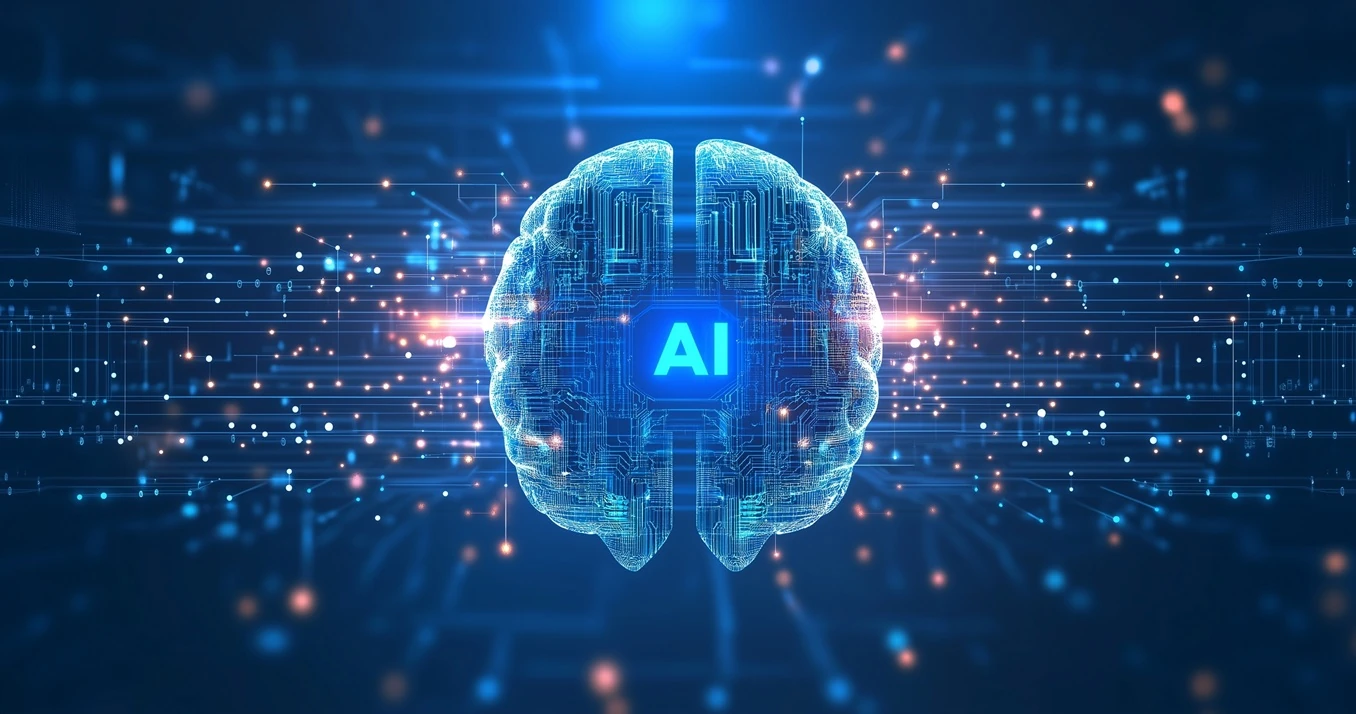Training AI: Building Internal Capabilities for Australian Businesses
Estimated reading time: 15 minutes
Key Takeaways
- Training AI is essential for Australian businesses to stay competitive in the evolving technological landscape.
- Effective AI model training involves data collection, preprocessing, model selection, training, and evaluation.
- Building an internal AI-capable workforce requires access to online courses, workshops, and partnerships with educational institutions.
- Challenges such as lack of skilled personnel and data privacy can be mitigated with strategic solutions.
- Real-world case studies like Telstra and Commonwealth Bank showcase successful AI implementations.
Table of contents
In today’s rapidly evolving technological landscape, training AI has become a critical skill for businesses aiming to stay competitive. As artificial intelligence continues to transform industries across Australia, companies must focus on building internal AI capabilities to harness its full potential and drive innovation and efficiency.
Understanding AI Training
Training AI involves teaching an artificial intelligence system to perform specific tasks by learning from data. To train an AI model, machine learning algorithms analyze vast amounts of data to make accurate predictions or decisions. This process is fundamental in developing AI systems capable of tasks such as image recognition, natural language processing, and predictive analytics. Unlike other machine learning applications, training AI specifically focuses on refining models to achieve higher levels of accuracy and reliability in their designated tasks.
Steps to Train an AI Model
Training an AI model requires a structured approach to ensure accuracy and efficiency. The following steps outline the essential processes involved in training AI effectively.
Data Collection
High-quality data is the foundation of successful AI training. Australian businesses can leverage various data sources, including:
- Customer interactions: Data from customer service chats, emails, and feedback forms.
- Operational data: Internal processes, sales records, and supply chain information.
- Public datasets: Government databases and open-source data repositories.
- Industry-specific databases: Specialized data relevant to specific sectors like healthcare or finance.
Ensuring data diversity and relevance is crucial for the AI application being developed.
Data Sovereignty in AI: Compliance and Data Protection in Australia
Data Preprocessing
Before training, data must be cleaned and prepared. This involves:
- Removing inconsistencies and errors: Correcting or eliminating incorrect data entries.
- Normalizing data formats: Standardizing data to ensure uniformity across datasets.
- Handling missing values: Addressing gaps in data through methods like imputation or removal.
Popular tools for data preprocessing include Python libraries like Pandas and NumPy, which streamline the cleaning and preparation process.
Choosing the Right Model
Selecting an appropriate AI model depends on the task at hand. Common types include:
- Neural networks: Ideal for complex pattern recognition tasks such as image and speech recognition.
- Decision trees: Suitable for classification tasks where decisions need to be made based on data inputs.
- Regression models: Best for predictive analytics where forecasting future trends is required.
Factors to consider when choosing a model include the nature of the problem, available data, computational resources, and desired outcomes. Aligning the model choice with business objectives and data characteristics is essential for optimal performance.
Training the Model
The actual training process involves feeding preprocessed data into the chosen model. This requires:
- Powerful computing resources: Utilizing GPUs or cloud-based solutions to handle large datasets efficiently.
- Machine learning frameworks: Tools like TensorFlow or PyTorch that facilitate the training process.
- Iterative adjustments: Continuously fine-tuning the model to improve performance and accuracy.
The training process is iterative, often requiring multiple cycles of adjustments and optimizations to achieve the desired model performance.
Evaluating and Refining the Model
Post-training evaluation is crucial to ensure the model’s effectiveness. This includes:
- Testing on unseen data: Assessing the model’s performance on new, untrained data to gauge its real-world applicability.
- Measuring metrics: Evaluating accuracy, precision, recall, and other relevant performance indicators.
- Fine-tuning hyperparameters: Adjusting the model’s settings to optimize performance based on evaluation results.
Continuous improvements are necessary to maintain and enhance the model’s accuracy and efficiency over time.
Resources for Training AI Workforce in Australia
Building a skilled AI workforce requires access to diverse resources tailored to different learning preferences and professional needs. Australian businesses and individuals can utilize the following resources to enhance their AI training.
Online Courses and Certifications
- Coursera’s AI for Everyone by Andrew Ng: A comprehensive course that introduces AI concepts to non-technical audiences.
- RMIT Online’s AI Strategy and Impact Course: Focuses on the strategic implementation and impact assessment of AI in business.
- Google’s Machine Learning Crash Course: Offers hands-on experience with machine learning fundamentals and TensorFlow.
- Tafe NSW: Offers a free online micro skill course on the introduction to AI.
Online learning platforms provide flexibility and access to expert instructors, making them ideal for continuous skill development.
Workshops and Seminars
- AI Expo Australia (Melbourne): An annual event showcasing the latest AI technologies and trends.
- Data Science Melbourne Meetups: Regular gatherings for professionals to discuss data science and AI advancements.
- Australian Institute for Machine Learning Workshops: Hands-on workshops focused on practical machine learning applications.
Attending in-person training sessions offers networking opportunities, hands-on learning, and exposure to the latest industry trends, fostering community and collaboration. The ones listed above are just a number in this booming industry.
Partnerships with Educational Institutions
- University of Sydney’s AI Hub: Collaborates with businesses to advance AI research and applications.
- Monash University’s Industry Partnership Program: Connects industries with academic expertise to drive AI innovations.
- CSIRO’s Data61 Collaboration Opportunities: Offers partnerships for cutting-edge data and AI research.
Collaborating with educational institutions provides access to cutting-edge research and expert knowledge, enhancing internal AI capabilities through hands-on experience and academic support.
Building Internal Capabilities for AI Adoption
Developing internal capabilities is essential for businesses to effectively adopt and utilize AI technologies. This involves fostering the right skills, culture, and continuous learning within the organization.
Skill Development Programs
Key skills to develop include:
- Programming (Python, R): Essential for developing and implementing AI models.
- Statistics and Mathematics: Fundamental for understanding and designing machine learning algorithms.
- Domain Expertise: Knowledge specific to the industry to tailor AI applications effectively.
- Data Visualization: Ability to interpret and present data insights clearly.
Implementing training programs through in-house workshops, online courses, and mentorship programs can enhance these skills. Continuous skill development ensures the workforce stays updated with the latest AI advancements.
Creating an AI-friendly Culture
Fostering an AI-friendly culture involves:
- Encouraging experimentation and innovation: Allowing teams to explore and test new AI ideas without fear of failure.
- Providing resources for continuous learning: Offering access to learning materials, courses, and training sessions.
- Fostering cross-functional collaboration: Promoting teamwork between different departments to integrate AI seamlessly into business processes.
Leadership support is crucial in promoting an open mindset towards AI, ensuring its integration into everyday operations and driving organizational growth.
Continuous Learning and Development
Staying updated with the latest AI advancements requires:
- Subscribing to AI journals and newsletters: Keeping abreast of new research and industry trends.
- Attending industry conferences: Networking with AI professionals and learning about cutting-edge technologies.
- Implementing regular internal knowledge-sharing sessions: Facilitating the exchange of ideas and best practices within the organization.
A learning environment that adapts to technological changes ensures that the organization remains agile and competitive in the AI landscape.
Challenges and Solutions in Training AI
Australian businesses often encounter several obstacles when training AI and adopting AI technologies. Understanding these challenges and implementing effective solutions is essential for successful AI integration.
Common Challenges
- Lack of skilled personnel: Difficulty in finding and retaining professionals with AI expertise.
- Data privacy concerns: Ensuring that data used for AI training complies with privacy laws and regulations.
- Integration with existing systems: Challenges in incorporating AI models into current business infrastructures.
Addressing these challenges is critical for the seamless adoption and effectiveness of AI initiatives.
AI and Data Privacy: Best Practices for Protecting Your Data
Practical Solutions and Best Practices
- Invest in upskilling programs: Develop internal training to enhance the skills of existing employees, reducing dependency on external hires.
- Implement robust data governance frameworks: Establish comprehensive policies and procedures to manage data privacy and security effectively.
- Adopt modular AI solutions: Utilize scalable and flexible AI tools that can be easily integrated with existing systems, minimizing disruption.
- Share best practices from successful AI implementations: Learn from industry leaders to guide businesses in overcoming common challenges.
These solutions help businesses navigate the complexities of AI training, ensuring successful implementation and long-term sustainability.
Case Studies
Real-world examples demonstrate how Australian companies have successfully trained AI models, highlighting effective strategies and tangible outcomes.
Telstra’s AI-powered Customer Service
Telstra, Australia’s largest telecommunications company, successfully trained an AI model to enhance its customer service operations. By analyzing millions of customer interactions, the AI system assists human agents in resolving queries more efficiently, resulting in a 30% reduction in average handling time. This integration of AI has significantly improved customer satisfaction and operational efficiency.
Commonwealth Bank’s Fraud Detection AI
Commonwealth Bank developed an AI model to detect fraudulent transactions in real-time. Trained on historical transaction data, the model achieves 95% accuracy in identifying suspicious activities, thereby significantly reducing financial losses for both the bank and its customers. This AI-driven approach has enhanced security measures and protected customers’ financial interests effectively.
Conclusion
Training AI is no longer a luxury but a necessity for Australian businesses aiming to remain competitive in the global market. By training an AI model and building internal capabilities, companies can unlock the transformative potential of artificial intelligence. Investing in AI education, leveraging available resources, and fostering a supportive culture are pivotal steps toward successful AI adoption.
Businesses are encouraged to take actionable steps based on the resources and strategies discussed to embark on their AI training journey. Embracing and mastering AI technology will pave the way for innovation, efficiency, and sustained growth in the Australian industry landscape.
Additional Resources
For further assistance in AI training, contact your local industry association or reach out to one of the educational institutions mentioned above.



